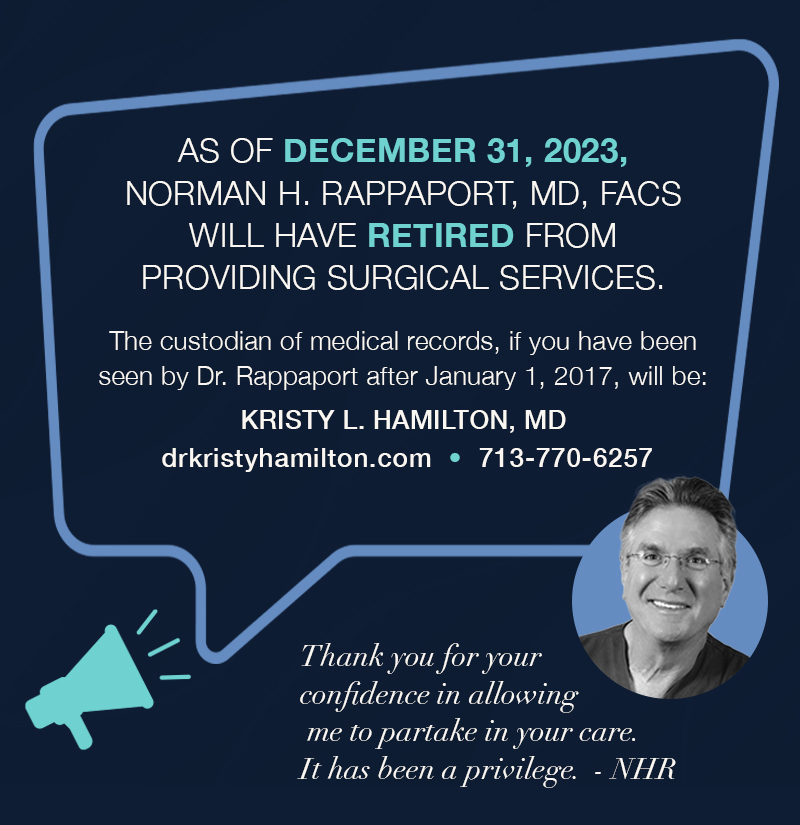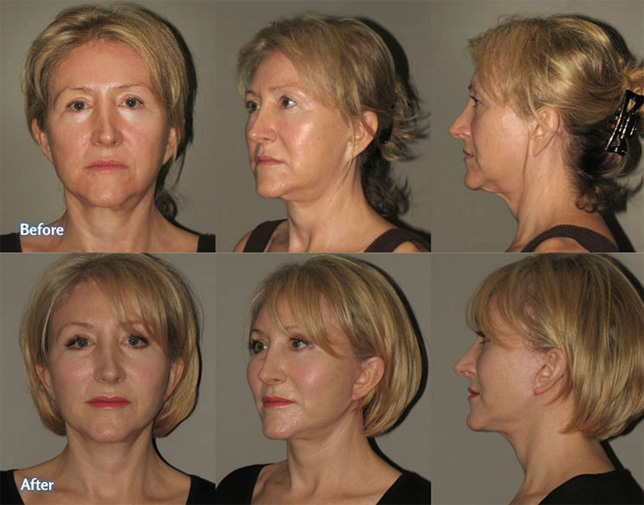
Breast Reconstruction Options
Breast reconstruction surgery can restore the appearance of a natural breast after a mastectomy—and help a woman look and feel like her normal self again. Many women find that breast reconstruction can significantly improve their self-image, self-confidence and quality of life. Now, a promising new trend in plastic surgery, breast reconstruction after nipple-sparing mastectomy, allows women to retain much of the natural look and feel of the breast, including the nipple and areola. While nipple-sparing mastectomy is not right for every woman, it can offer a variety of benefits to women who are candidates.
Nipple-sparing breast reconstruction offers the following benefits:
- Keeps the nipple and areola in place
- Preserves the natural look of the breasts
- May maintain a degree of nipple sensation for some patients
- Can produce better shape to breasts than before mastectomy
Breast Reconstruction Houston
Options in Breast Reconstruction
Patients that are considering breast reconstruction have a few options to consider:
Surgery Timing – Patients may opt to begin the reconstruction process during mastectomy surgery or anytime afterward. Factors that may influence this decision include whether additional cancer treatment will be done after surgery, the patient’s emotional and physical health at the time of the original surgery and the patient’s personal preference.
Implants or Flap – Tissue expanders and breast implants have been the go-to technique for breast reconstruction in the past. While this option is still performed about 80 percent of the time, more patients are now opting for flap procedures that take tissue from another part of the body like the abdomen or back and use it to create a new breast mound.
Implant Type – Patients choosing the expander/implant path to breast reconstruction will also need to decide on the type of implant they want. Saline implants are filled with a sterile saline solution after placement in the breast pocket. Silicone implants come prefilled with a cohesive gel that holds its shape even if the implant ruptures. Both types of implants come in a variety of sizes, projections and styles, allowing for customization of the implant to the unique body size and shape of the patient.
TRAM Flap or Back Flap – If the flap procedure sounds more desirable, the next choice will be whether to use a TRAM or back flap. A TRAM (transverse rectus abdominis muscle) flap uses tissue from the patient’s abdomen. Patients with excess abdominal skin and fat are the best potential candidates for this type of reconstruction. A back flap uses tissue from the latissimus dorsi muscle in the patient’s back. With this procedure, an implant may also be used if the volume from the back flap alone is not sufficient.
How is Breast Reconstruction Performed?
Breast reconstruction may be performed as an inpatient or outpatient procedure, depending on the type of surgery to be done. If the patient chooses to have an expander and implants, the expander can be placed into the breast at the same time as the mastectomy. Patients will typically spend one night in the hospital for this procedure. Placement of the implants usually occurs approximately three months later, on an outpatient basis in Dr. Rappaport’s surgical facility.
Flap procedures may also require a brief hospital stay, since incisions will be placed in both the donor site and the breast tissue. TRAM flaps usually require more hospitalization time, with patients going home within 1-3 days. Patients receiving the back flap usually go home a day or two after the procedure. Breast reconstruction is typically done under general anesthesia, regardless of the specific technique used.
What is the Recovery Like?
Patients that undergo a flap procedure are usually back to regular activities within 6-8 weeks. Implant surgery tends to have a shorter recovery period, with some patients back to regular activities within 2-3 weeks. Your recovery time will also vary based on whether you have reconstruction surgery at the same time as your mastectomy or later on as a single procedure.
Dr. Rappaport Answers Questions about Breast Reconstruction
When is the best time to have a breast reconstruction consultation?
I prefer to see you before you have a mastectomy or lumpectomy if possible. Then I’m able to explain your options and reasonable expectations for breast reconstruction. If you have already had a mastectomy or lumpectomy, I will explain your options available at that time.
Does insurance cover breast reconstruction surgery?
Yes. The Women’s Health and Cancer Rights Act of 1998 requires insurance companies that cover mastectomies to provide certain benefits for reconstructive breast surgery. However, your coverage may provide only a small part of the total fee.
What helps determine the timing of breast reconstruction surgery?
Of course, the decision is up to you. I think it is appropriate from a medical standpoint to do breast reconstruction at the same time as the mastectomy or lumpectomy. The big concern is whether you are going to have radiation following your mastectomy or lumpectomy.
Who is a candidate for nipple-sparing mastectomy and reconstruction?
Factors that must be considered include the tumor, its location and the distance from the nipple-areola complex. But, given an appropriate team approach in your cancer treatment, there is a possibility of being able to preserve the anatomical landmarks of the breast rather than just replacing the breast mound itself.
What happens if there are cancer cells in the nipple or areola?
There is a risk of residual tumor, but you can always go back and remove the nipple and areola if necessary. In that case, the nipple-sparing mastectomy will have saved a significant amount of skin, which then makes reconstructive surgery that much easier.
Should chemotherapy and radiation affect my breast reconstruction plans?
The most important consideration is the appropriate treatment of your breast cancer. I will work with you, your surgeon and your oncologist to develop an individualized treatment plan. The timing of your breast reconstruction will depend on the type and frequency of the cancer treatments recommended for you.
How is radiation therapy a factor in choosing reconstructive surgery?
Radiation has a negative effect on the skin’s texture and elasticity and its ability to withstand some of the techniques used in breast reconstruction surgery. Radiation therapy affects the skin’s blood vessels and makes the skin more firm.
How well will a reconstructed breast match the other, natural breast?
We have a saying when it comes to any kind of breast surgery: We’re making sisters, not twins. I think that’s pretty evident when we’re dealing with breast reconstruction. While we strive for symmetry in performing breast reconstruction, many women’s natural breasts are not perfectly symmetrical. To achieve better balance between the size and position of the breasts, it is not unusual to perform surgery on the opposite breast, such as a lift, augmentation or reduction, to match the size, shape and volume of the reconstructed breast.
Can I have breast reconstruction in stages?
Yes. If you’re going to be having chemotherapy or radiation, it’s beneficial for you to at least have some breast mound so you can wear clothes normally and feel better about yourself. So what we start out with may not be the final product. The nipple/areola reconstruction can be done later.
Which breast reconstruction method is most common?
It’s interesting how time has changed the procedures women choose. It used to be that tissue expanders along with tissue support were by far the most common choice. Today, I’d say that 50 percent of my breast reconstruction patients choose the expander/implant technique; about 35 percent choose the TRAM flap and 15 percent opt for the back flap technique.
Why do I need a tissue expander?
A tissue expander helps develop an appropriate pocket for the placement of a breast implant with adequate soft-tissue coverage.
Is there any chance an implant can cause my cancer to recur?
There have been no reported cases, nor evidence to suggest that an implant caused a cancer to recur.
How long can I wait after cancer surgery to decide on reconstruction?
Breast reconstruction surgery can be performed essentially at any time if you are undecided at the time of mastectomy or lumpectomy.
Will I have feeling in my reconstructed breast?
You may regain some skin sensation in the reconstructed breast, but not in the nipple-areola complex.
There are many decisions to make when faced with losing a breast due to cancer or another condition. Dr. Rappaport can help you understand your options for breast reconstruction and the results you can realistically expect. As a part of the breast cancer tumor board at Houston’s Methodist Hospital, part of the world-renowned Texas Medical Center, Dr. Rappaport is able to work in partnership with you, your oncologist and your breast surgeon to achieve the outcome you desire. To learn more, contact Houston Center for Plastic Surgery at 713-790-4500.
6560 Fannin Street, #1812
Houston, Texas 77030
Phone: (713) 790-4500
Fax: (713) 793-1299
Email: info@hcps.cc


